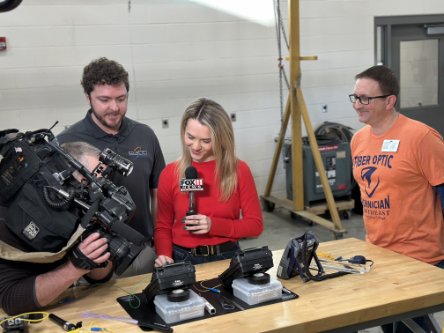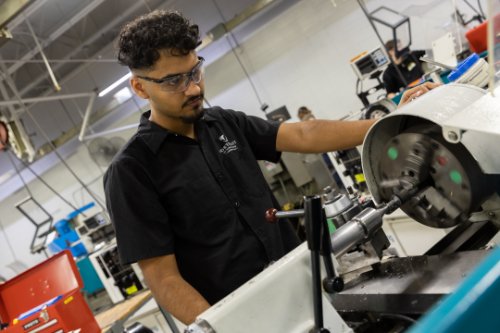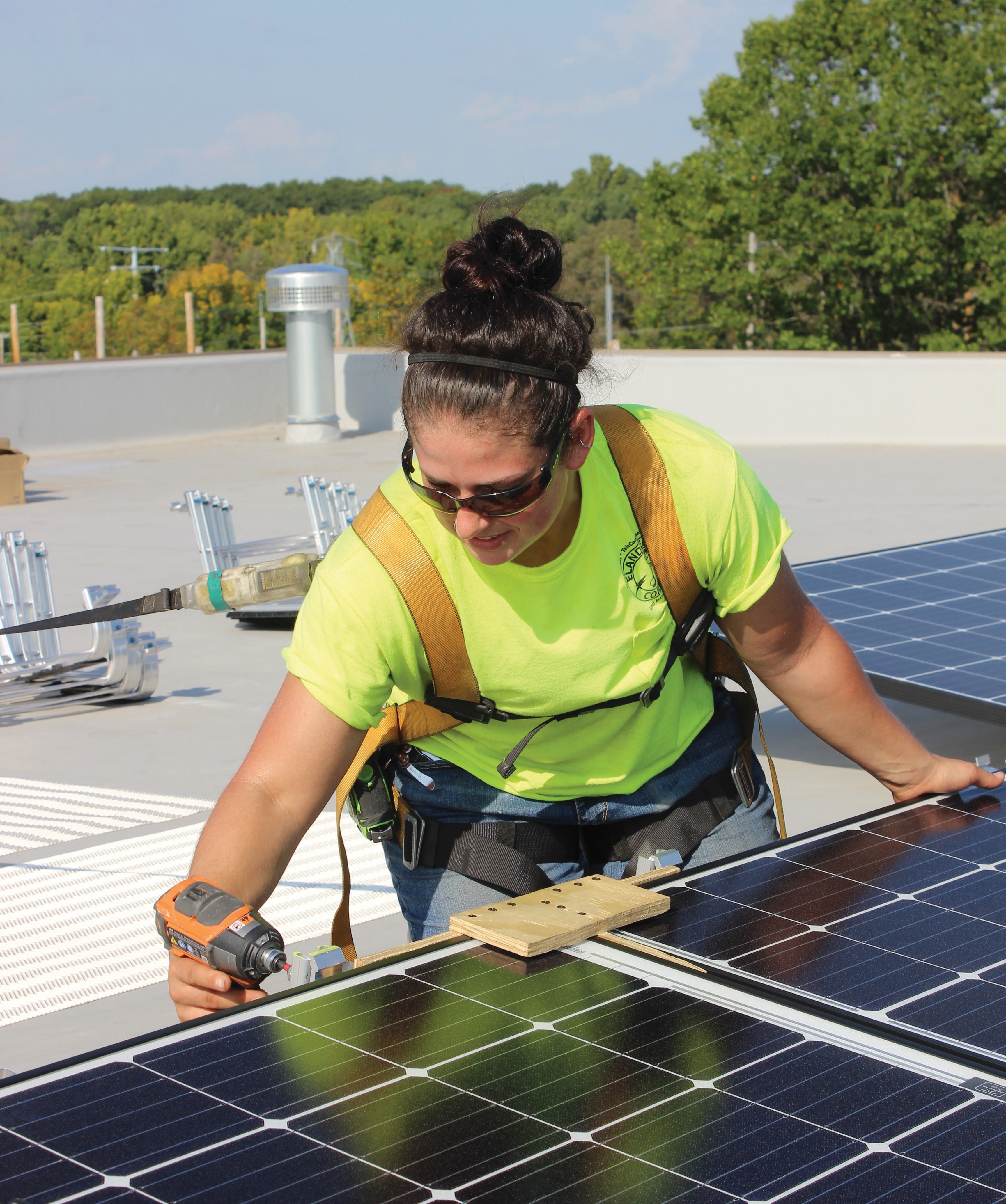Northeast Wisconsin Technical College has been awarded nearly $300,000 to reduce energy consumption and drive positive environmental impact within the community.
Wisconsin’s Office of Energy Innovation bestowed a $250,000 grant upon NWTC through the Energy Innovation Grant Program, while an additional $20,000 grant was provided by the Wisconsin Public Service Foundation.
NWTC is utilizing the funds to initiate a battery storage system dedicated to storing and renewable solar energy for its Great Lakes Energy Education Center. Additionally, this battery system will be integrated into the curriculum, providing students with training in the maintenance and troubleshooting of cutting-edge technology.
“We appreciate the continued support of our community partners and their confidence in the transformation of technical education,” said Howard Herrild, associate dean of trades and Engineering Technologies. “With this grant, we are not just investing in education, we are investing in a legacy of environmental stewardship and empowering professionals who will shape the future of sustainability.”
Studies show that Wisconsin consumes almost six times as much energy as the state produces – and a third of that energy is used by businesses industries. To meet industry needs, the job market for solar energy in Wisconsin is projected to more than triple by 2030.
NWTC is the only technical institution in Wisconsin to offer a comprehensive training program within solar energy. Providing real-world training and swift entry into the job market, technical education plays a crucial role in fulfilling the needs for one of the fastest growing careers on the planet.
“The demand for skilled workers in this industry has never been more critical – we just cannot graduate students fast enough,” said John Hippensteel, NWTC solar energy instructor. “As solar power becomes an integral part of our future, these trained professionals play a vital role in harnessing its potential. That’s why it’s so important for our students to receive cutting-edge training so they are not only proficient in their field, but innovators empowered to create a positive change.”
NWTC, a leader in technical education, has consistently demonstrated a dedication to sustainability and environmental stewardship.
The College is on the verge of achieving its goal to reduce its carbon footprint 60% by 2030.
Some of the major milestones in this effort include offering sustainable sourced food, creating a half-acre pollinator habitat, expanding electric fleet vehicles, and receiving Tree Campus USA designation.
Hippensteel says, “While it’s crucial for technical colleges to train these skilled professionals, it’s equally about fostering a commitment to sustainable practices. This battery system is a step towards an overall journey that NWTC is taking to build a brighter future. After all, who wouldn’t want to live on the power of sunshine?”
Interested in learning more about energy and other emerging careers? Don’t miss NWTC’s Engineering Open House on February 20, 2024.
Visit nwtc.edu to learn more.
###
Acknowledgement from Public Service Commission of Wisconsin:
This material is based upon work supported by the by the Public Service Commission of Wisconsin, Office of Energy Innovation and the Department of Energy, Office of Energy Efficiency and Renewable Energy (EERE), under the State Energy Program Award Number DE-EE0000163.
This report was prepared as an account of work sponsored by an agency of the United States Government. Neither the United States Government nor any agency thereof, nor any of their employees, makes any warranty, express or implied, or assumes any legal liability or responsibility for the accuracy, completeness, or usefulness of any information, apparatus, product, or process disclosed, or represents that its use would not infringe privately owned rights. Reference herein to any specific commercial product, process, or service by trade name, trademark, manufacturer, or otherwise does not necessarily constitute or imply its endorsement, recommendation, or favoring by the United States Government or any agency thereof. The views and opinions of authors expressed herein do not necessarily state or reflect those of the United States Government or any agency thereof.




